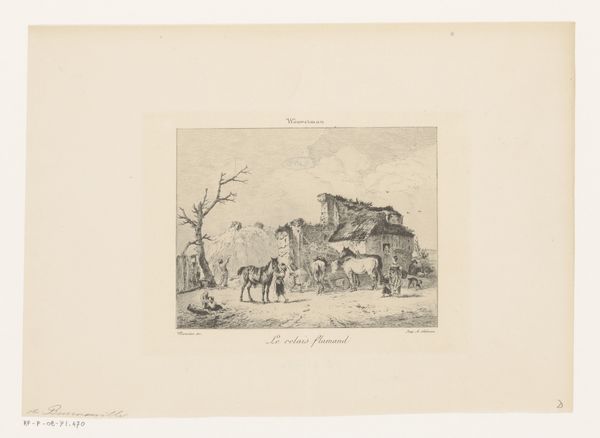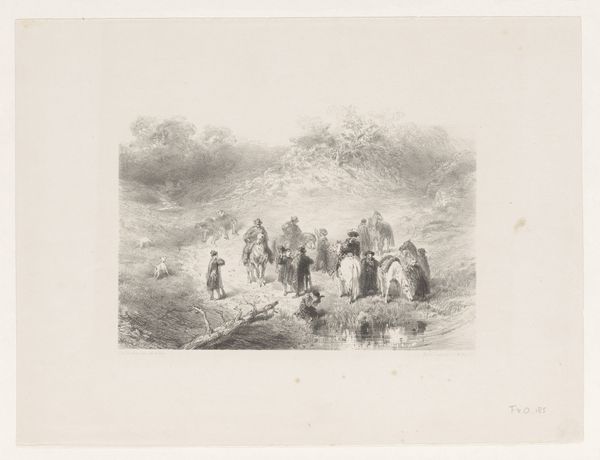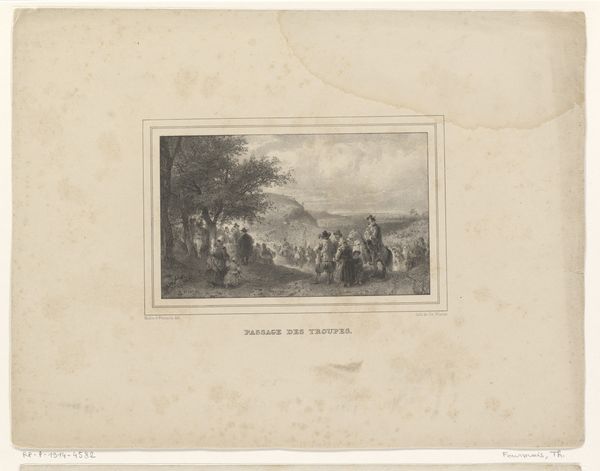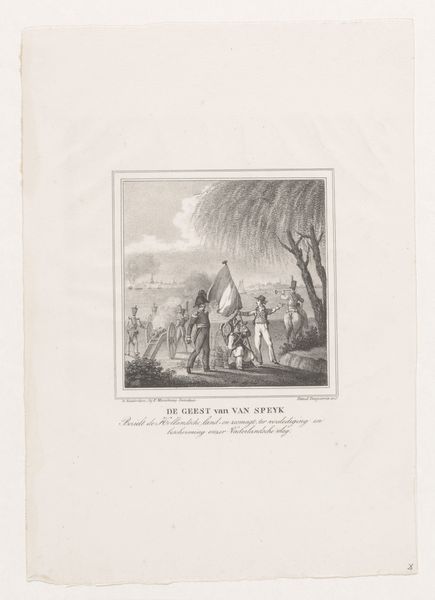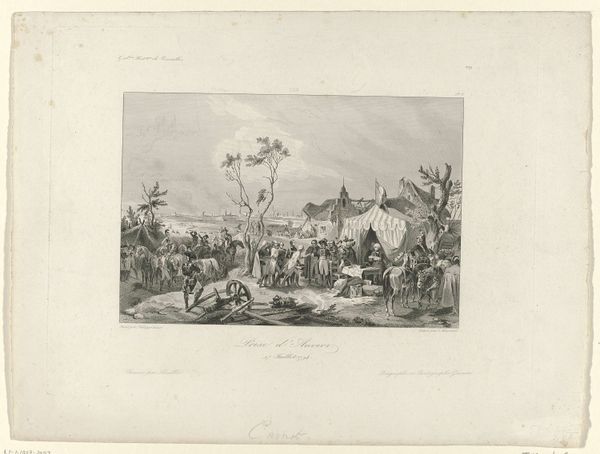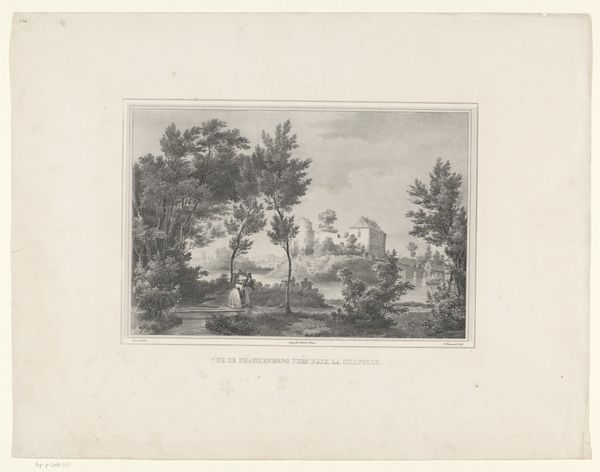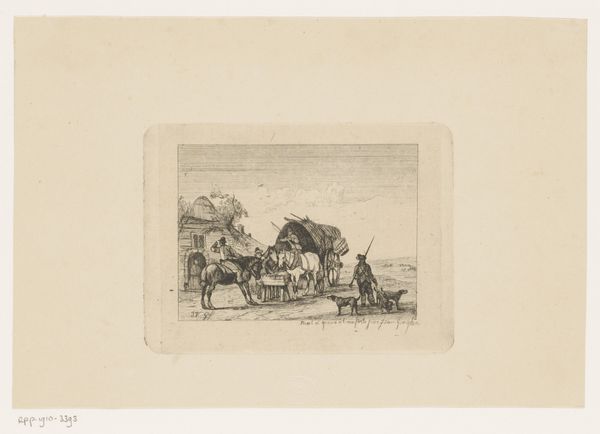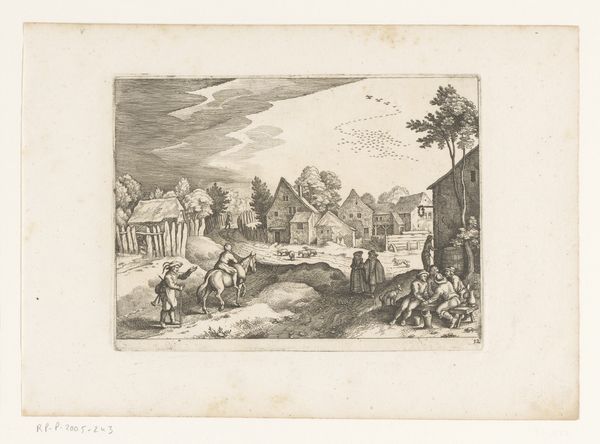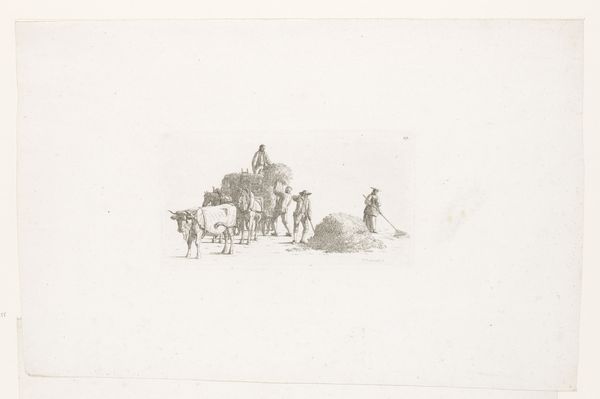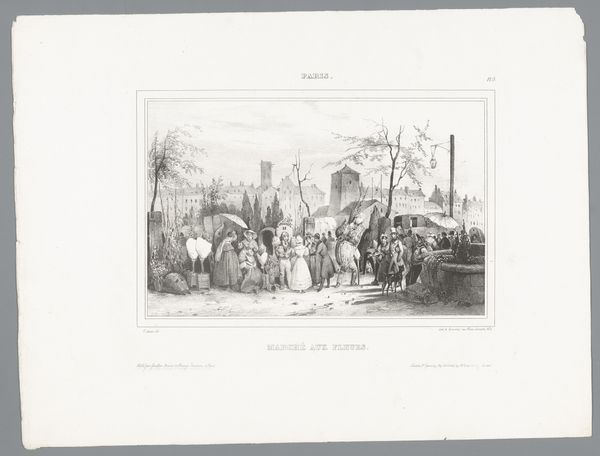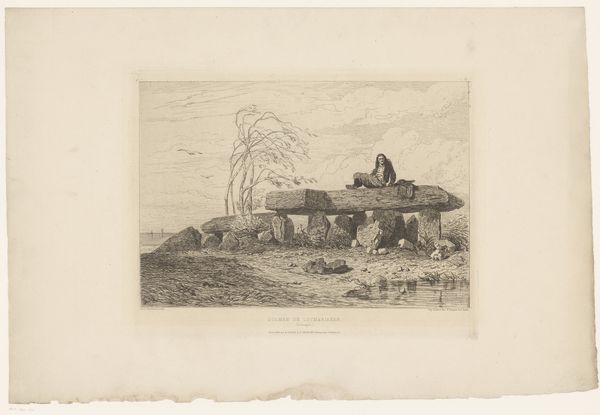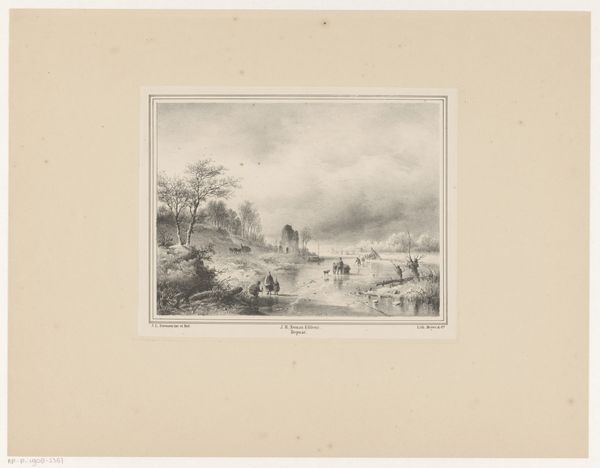
drawing, print, etching, graphite
#
drawing
# print
#
etching
#
landscape
#
graphite
#
genre-painting
Dimensions: height 128 mm, width 142 mm
Copyright: Rijks Museum: Open Domain
Editor: So, here we have "Soldiers and Travellers Before a Tent," by Amédée Paul Greux. It's an etching made sometime between 1846 and 1919. It reminds me a bit of a hazy dream. The figures and details seem soft and almost ethereal. What catches your eye? Curator: The immediate impression is one of dynamic stillness, achieved through contrasting tonal values. Note how the artist juxtaposes the light, open space of the sky with the densely packed forms of figures and animals clustered near the tent. Consider the line work: short, repetitive strokes create texture and volume, yet lack sharp definition. This serves to flatten the pictorial space, emphasizing the two-dimensionality of the print. Editor: Flattening… that's interesting. So it's less about creating an illusion of depth, and more about… what? Curator: More about the formal interplay between line, tone, and composition. The repetitive marks, are they simply representational, or do they establish an all-over pattern that transcends the depicted subject matter? Note also the dominance of horizontal lines—the horizon, the ground, the implied lines of the figures at rest. How do these contribute to the overall sense of quiescence despite the implied activity? Editor: I see it now. It’s not really telling a story; it’s about how the lines and light work together to create a mood. I initially overlooked the impact of those horizontal lines. Thanks, I am looking at it so differently. Curator: Indeed. Formal analysis encourages a slowing down, a focused engagement with the language of the image itself, a syntax of marks.
Comments
No comments
Be the first to comment and join the conversation on the ultimate creative platform.
